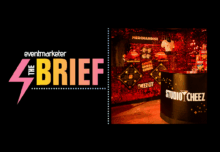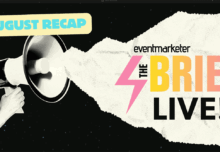There are any number of actions a consumer can take along the customer journey from awareness to purchase, and by imagining each of them as a stepping stone toward a transaction—a valuable exchange of a good piece of data—you’ll fast-track your brand beyond an integrated approach and into the realm of Experiential Commerce.
“Behaviors are truth. Actions are truth. Measuring what people do is important because that gives us a sense of what’s really working and what’s not, and it also gives us a sense of where our consumers are in a brand’s orbit and if they are getting closer to the point of purchasing,” says Matt McCoubrey, VP at Salt XC. “Maybe they watched an ad and then they clicked on a website. Maybe they interacted on social but they clicked on a direct-to-consumer site that was in our profile. They’re doing things, rather than just saying, ‘I intend to purchase this at some point.’”
McCoubrey explores some different types of actions engineered for commerce:
Responding to incentives —> Cultivating data on preferences —> A sale.
From an Alexa Echo unit that analyzes our Amazon orders and suggests products we may be running out of, to apps like the Starbucks App that pushes specialized, geotargeted or segmented offers to consumers around the time of day they’re typically ordering that afternoon pick-me-up, smart brands are popping into consumers’ day-to-day routines when they need it most. And these interactions are designed to potentially trigger more actions: additional purchases in-store; an incentive to invite a friend to sit and sip; a coupon for merchandise. (And if you’ve already thought about how a physical activation could greet them in-store, you’re thinking like an Experiential Commerce engineer.)
Scanning to learn more —> Coveted first-party data —> More relevant targeting.
When you think about your marketing mix as a “brand orbit,” all the channels become tools and levers you can leverage or pull as part of a “breadcrumbing” of experiences designed to trigger actions, generate data and drive a transaction. While major retailers often own the pie when it comes to consumers’ purchasing habits in-store, strategies like experiential packaging with a scan can trigger an augmented reality moment which can lead to opt-in, first-party data for your database—and the insights you need to take that relationship with the consumer much farther down the path to purchase.
An invite to follow online —> A click to purchase —> A potential influencer.
Measuring social media strategy based on engagement, impressions and unique click rates is archaic in the Experiential Commerce world. Instead, marketers are thinking about the role social media plays in the “brand orbit,” and driving the consumer from point A to point B. You may have secured a follow and a few likes, but you’d be missing out on more actions and data, without a click-to-purchase strategy and a direct-to-consumer path to capture transactions and serve up incentives and product exclusivity that’ll make followers diehards.
Subscribing to content —> An engaged consumer —> Quality data on preferences.
You’ve heard it before—content is indeed king. But to be successful, you have to think of a brand as a content studio with compelling, everyday tips, insights and interviews that will drive consumers to A. Opt-in, and B. Stay engaged with you. Perhaps you’ve created a clever contest that involves crowdsourcing with your followers (product innovation); maybe it’s recipe inspiration (valuable data on preferences); guest videos (now you know the types of influencers your audiences respond to) or weekly incentives (there’s that potential transaction). The key is leveraging that data to then design more and highly productive actions.
Attending an event —> Registering on a microsite —> A future revenue generator.
“Extending the life of the event” was the rallying cry of the experiential marketing industry for many years—until digital made it ubiquitous. But in a new era, it’s less about shares and more about community building. Think a microsite where your attendees can go to opt-in from on-site (in exchange for a giveaway), but where afterward they can retrieve a custom photo from the event, download incentives, chat with fellow attendees and, potentially, purchase tickets to attend another type of event with you.
“Attitude follows behavior, not vice versa. Designing a customer journey around valuable behavioral transactions is what will help brands actually evaluate the marketing activity,” says Jil Lohnes, VP at Salt XC. “Looking at attitude can give context, but it is very hard to valuate—this is where a lot of marketers get lost in proving ROI.”
When brands begin thinking about consumer journeys as seamless trackable paths connected by measurable behaviors, evaluating what works, and what doesn’t, becomes much clearer.
Indeed, the silos have come down and the brand orbit is in view.
To learn more about Salt XC, click here.
Learn more about Experiential Commerce here.
Image credit: iStock/filo






